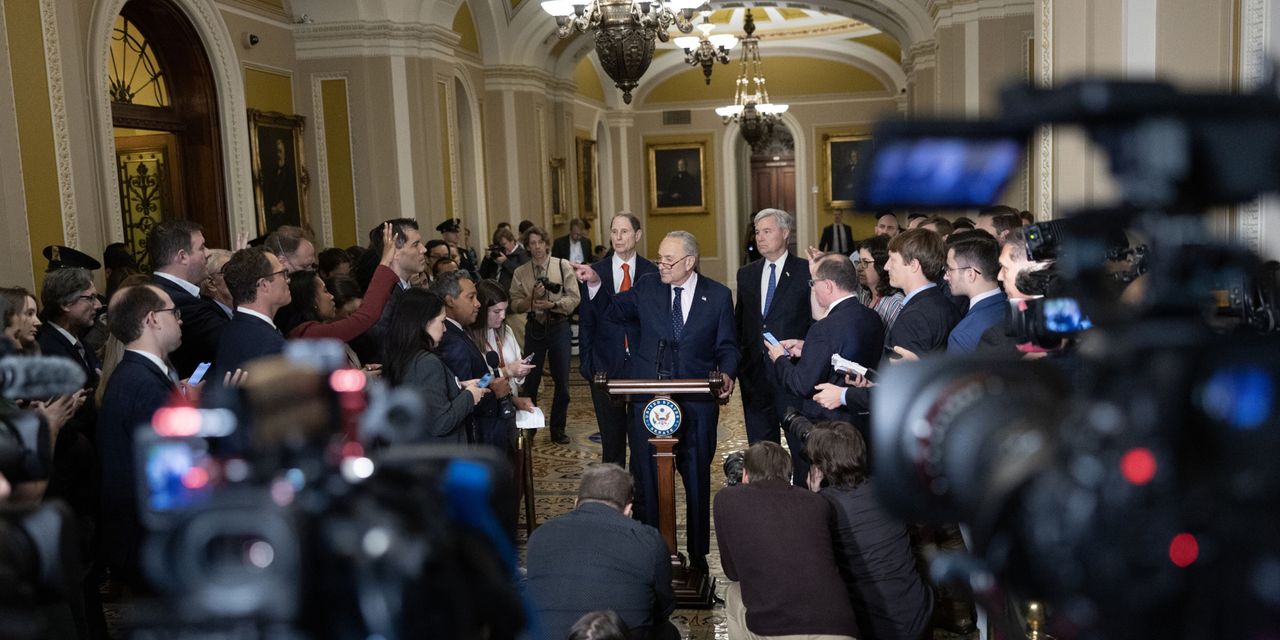Hakuna matata. If we created a musical score for the markets, the famous song from The Lion King would be hard to beat.
Everyone knows that the global financial markets will implode if Congress fails to let the U.S. government borrow even more money, but investors seem to have faith in Congress and President Joe Biden.
If there was real reason to fret that the political leaders are unable to do the right thing for America, stock prices wouldn’t remain relatively high and options volatility wouldn’t be unusually low. But they are.
The
Cboe Volatility Index,
or VIX, is around 18, which suggests the
S&P 500 index
will move about 1% each day, up or down, over the next 30 days. Fear of a major financial crisis should have the VIX trading at 30, or higher.
Of course, anyone who takes solace in high-level market readings is medicated or delusional. All that can be said with any semblance of certainty at this moment in economic time is that the stock market is always right on price, but it has a horrible sense of timing. The same is true for options volatility.
Moreover, the great Warren Buffett, a paragon of patience with a record of turning chaos into money, is reportedly happy sitting in cash. Many readers agree. They have recently remarked on the joys of earning 4% or more on their cash without taking on any market risk. After all, the stock market’s historic annual return is only around 9%.
Still, we recognize that there are those among us who like to monetize chaos before it emerges. After all, the debt-ceiling negotiations began late Tuesday and much work has to be done, as the U.S. government could run out of money by June 1. For hyperaggressive investors, the
SPDR S&P Regional Banking
exchange-traded fund (ticker: KRE) remains an intriguing way to try to bearishly trade the debt-ceiling crisis, which could hammer economically sensitive bank stocks that tend to be on the front lines of the U.S. economy.
We suggested a KRE put-option spread in early April when the ETF was $42.46. We suggested buying the September $40 put and selling the September $30 put for about $2.20. The spread is now worth about $4.20, a 91% increase in about a month, as the ETF has fallen to about $37. (Puts give holders the option to sell an underlying asset for a set price within a specific period.)
Investors who want to realize profits on the KRE strategy, or initiate a new position, can consider buying the ETF’s July $35 put and selling the July $25 put. The spread cost about $2.40 when the ETF was around $37. If it is at $25 at expiration, the spread is worth a maximum profit of $7.60 ($10 spread minus $2.40 premium).
A recent Federal Reserve survey of senior loan officers showed that credit conditions were tightening and that loan demand is ebbing, which would impact bank profits.
Patient investors can simply wait and watch Washington’s political leaders. There is likely to be a lot of brinkmanship, and that could create microbursts of volatility.
Should stocks plummet on the debt-ceiling debate, think about selling puts on blue-chip stocks that you can warehouse for three to five years. Should stocks surge on the resolution of the crisis, think about selling bullish call options on your stocks to enhance returns.
Both approaches seek to monetize fear and greed. The strategies express a desire to get paid by the options market just for agreeing to be a long-term investor in blue-chip stocks. As we have argued before, the U.S. stock market is the world’s reserve currency. Yes, there is risk to owning equities, but investors have many options for dealing with that.
Corrections & Amplifications
Investors who buy the
SPDR S&P Regional Banking ETF’s
July $35 put and sell the July $25 put could realize a maximum profit of $7.60 if the ETF is at $25 at expiration. An earlier version of this column incorrectly said that investors could realize a maximum profit of $8 on the trade.
Steven M. Sears is the president and chief operating officer of Options Solutions, a specialized asset-management firm. Neither he nor the firm has a position in the options or underlying securities mentioned in this column.
Email: [email protected]
Read the full article here








